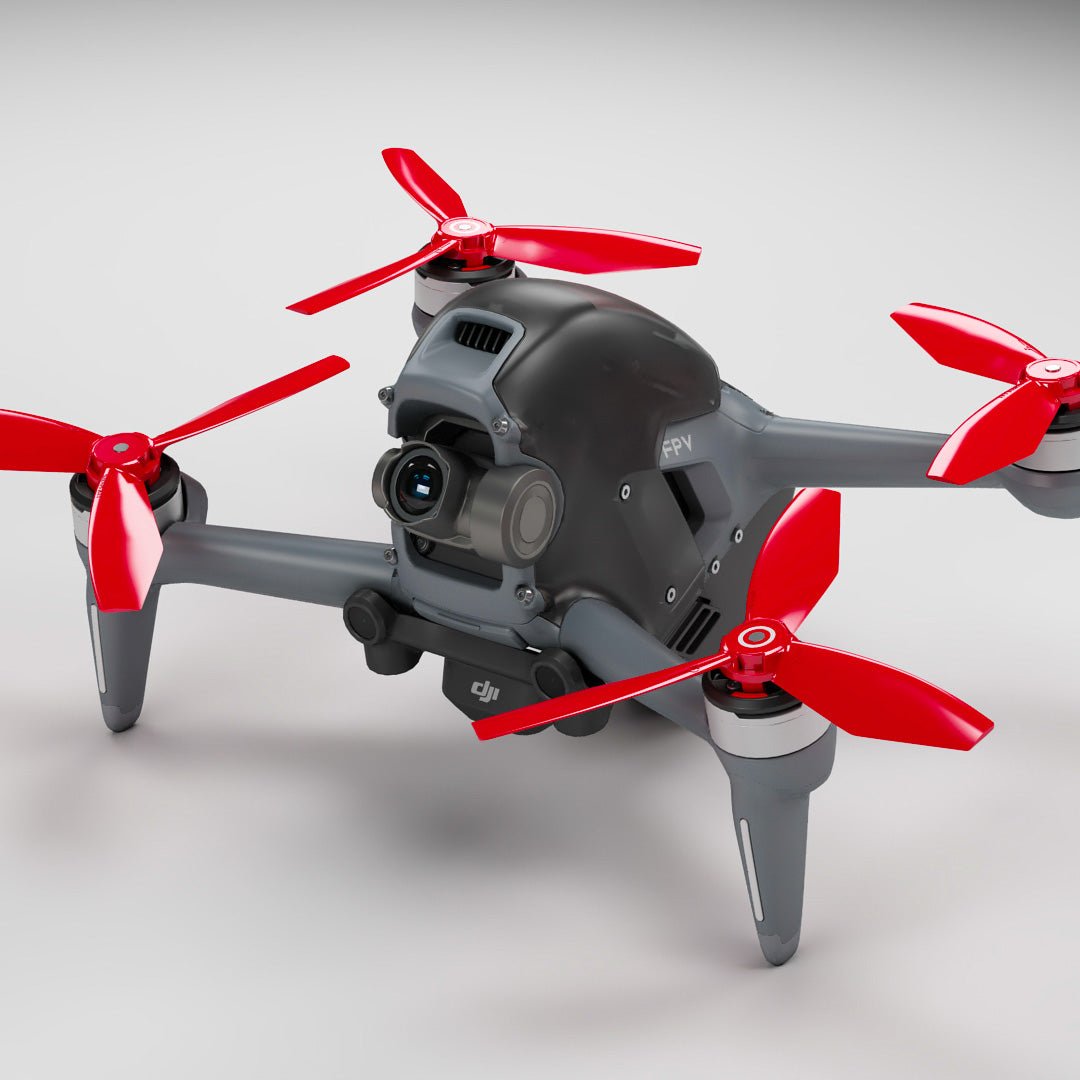Introduction
Overview of DJI Racing Drones
In the exhilarating world of FPV (First Person View) racing, DJI has emerged as a game-changer, providing enthusiasts with cutting-edge technology that elevates the racing experience. These drones are not just fast; they are designed for precision and agility, giving racers an edge on the track. DJI racing drones are equipped with powerful motors, intuitive controls, and high-definition cameras that allow pilots to immerse themselves completely. If you’ve ever tried flying one, you know the thrill of zipping through obstacle courses, narrowly avoiding collisions while navigating through the air. Some standout features of DJI racing drones include:
- Enhanced Stability: Advanced flight stabilization technology allows for smooth operation, even at high speeds.
- Durability: Built to withstand crashes and harsh conditions, these drones are designed for the rigors of racing.
- User-friendly Interfaces: Many models come equipped with intuitive controls, making them accessible for both beginners and seasoned pilots.
- FPV Footage Quality: With high-definition video capabilities, pilots can capture their racing experiences in stunning detail.
Embracing DJI as your go-to for racing drones not only means investing in robust technology but also becoming part of a community of racers who push the limits of what’s possible in drone flying.
History and Evolution of FPV Racing
FPV racing has roots that stretch back to the early 2000s, growing out of the larger drone racing phenomenon that started gaining traction in hobbyist circles. What began with basic remote-controlled aircraft soon transformed into a high-tech competition, driven by advancements in technology and a passionate community. Here’s a quick timeline of its evolution:
- 2007-2010: The first FPV setups emerged, utilizing bulky cameras and First Person View systems that were often homemade. Early adopters faced numerous challenges, including signal dropouts and limited flight ranges.
- 2013: The first organized FPV racing events took place, marking a shift from casual flying to competitive racing. This brought attention to the growing sport, leading to increased sponsorships and community support.
- 2015-2017: The introduction of lightweight and portable drone technology by companies like DJI led to a boom in popularity. Racing drones became faster and more maneuverable, with a higher emphasis on agility and design.
- Today: FPV racing is now a sport recognized globally, with professional leagues and events that attract thousands of spectators and participants.
As technology continues to advance, so does the community. Pilots can share tips and tricks online, enhancing their skills and contributing to the sport’s growth in exciting ways. Whether you’re new to the scene or a seasoned pilot, immersing yourself in the history of FPV racing can be a fantastic way to engage with the community and hone your flying skills. With the foundation laid, you’re ready to venture deeper into the world of DJI racing drones and the thrilling experiences they offer.
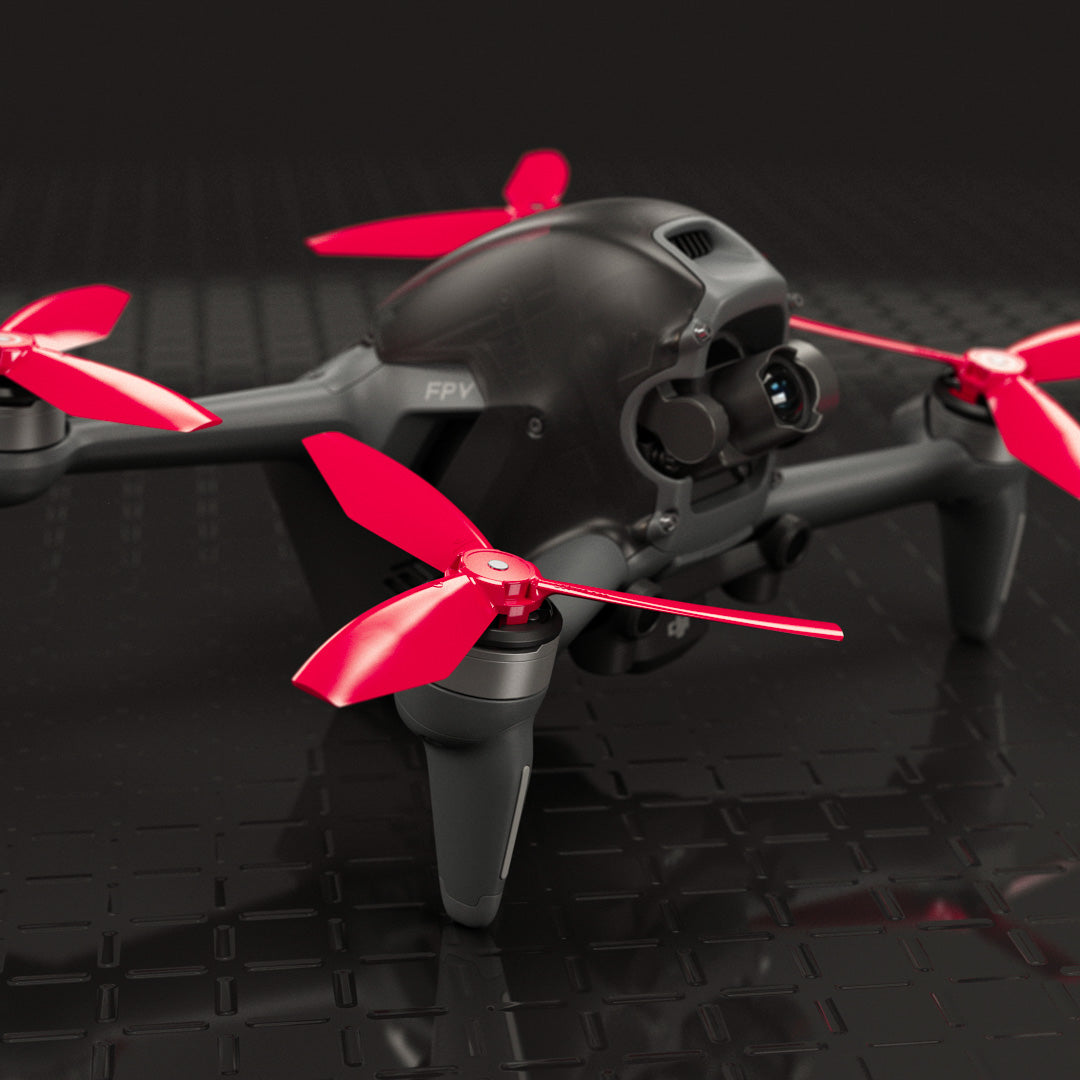
Getting Started with DJI Racing Drones
Understanding FPV Drone Components
Once you’ve delved into the thrilling world of FPV racing, it’s essential to understand what makes up these high-speed machines. Each component plays a vital role in not just flying but also winning races. Let’s break it down:
- Frame: This is the structure of your drone, providing the foundation for all components. Lightweight carbon fiber frames are popular among racers for their durability and minimal weight.
- Motors: These are the powerhouses of your drone, dictating its speed and agility. Racing drones typically use brushless motors, which offer high efficiency and longevity.
- Electronic Speed Controllers (ESC): These devices control how fast the motors spin. Quality ESCs can provide rapid responses to throttle inputs, which is crucial in racing scenarios.
- Flight Controller: This is like the brain of your drone. It maintains stability and helps you maneuver smoothly. Look for advanced flight controllers with features like GPS hold and altitude control for easier flying.
- Camera: The FPV camera gives you the immersive racing experience. DJI offers amazing high-resolution cameras to ensure you have a clear view during your races.
- Transmitter and Receiver: These components communicate your commands from the remote to the drone. A good transmitter will have a long range, which can be key in crowded race environments.
Understanding these components will give you an edge in customizing and optimizing your racing drone for better performance.
Choosing the Right DJI Racing Drone Model
With DJI’s range of racing drones, picking the right model can feel overwhelming, especially for newcomers. Here’s a quick guide to help you make the right choice:
- Skill Level: If you’re just starting out, consider models designed for beginners. Look for features such as GPS stability and altitude hold, which make flying significantly easier.
- Intended Use: Are you racing competitively, or just flying for fun? Competitive models are built for speed and agility and may not have user-friendly features, while casual scooters could offer a more relaxing flight experience.
- Budget: DJI’s offerings vary widely in price. Determine what you’re willing to invest, keeping in mind that quality often correlates with price. However, there are solid mid-range options that provide excellent performance without breaking the bank.
- Community and Support: Check out forums or local groups centered around the DJI model you’re considering. Communities can offer invaluable advice on tips, tricks, and modifications.
For example, the DJI FPV drone combines speed with user-friendly design, making it a fantastic choice for newcomers wanting to dip their toes into racing. Experienced pilots, on the other hand, might prefer customizable models that allow for advanced modifications. Moving forward, understanding your drone’s components and selecting the right model sets you up for an enjoyable racing experience, paving the way for thrilling races and fun interactions in the FPV community!
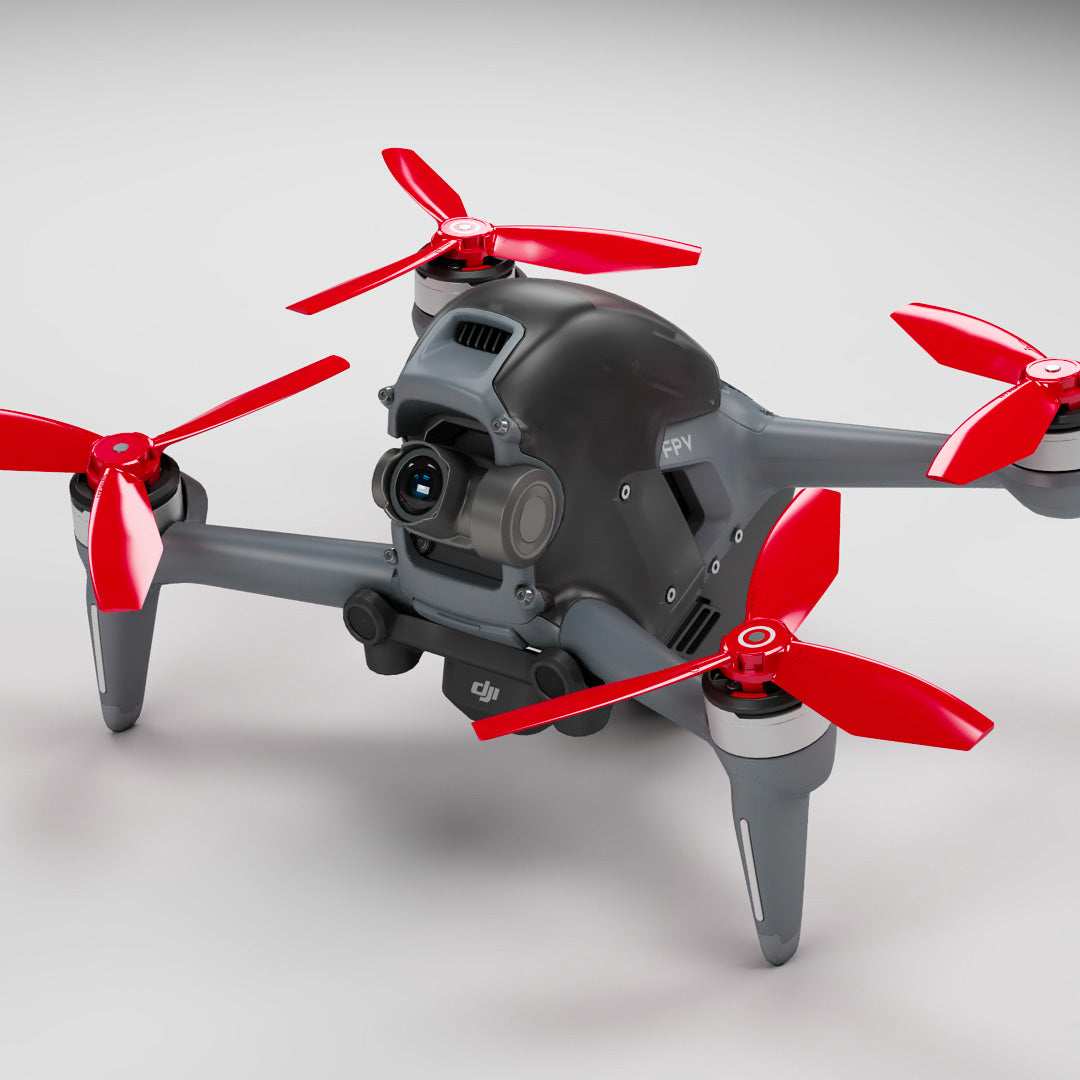
Essential Equipment for FPV Racing
FPV Goggles and Headsets
When you’re racing FPV, having the right gear can significantly enhance your experience, starting with FPV goggles or headsets. These are your window to the world from the drone’s perspective, offering an immersive experience that lets you feel like you’re actually in the pilot’s seat. Choosing the right goggles is crucial, so here are some features to consider:
- Resolution: Higher resolution goggles provide a clearer view, making it easier to spot obstacles and navigate through tight spaces. A minimum of 720p is generally preferred, with many high-end options offering 1080p or more.
- Field of View (FOV): A wide FOV enhances your peripheral vision, allowing you to have a better sense of where your drone is in space. Look for a FOV of at least 30 degrees.
- Latency: Lower latency is essential for a responsive flying experience. Aim for goggles with a latency of less than 20ms for seamless tracking of your drone’s movements.
- Comfort: Since races can last for quite some time, comfortable, adjustable straps and soft padding can make a big difference. Don’t forget to check the weight; lightweight designs will make it easier to wear for extended periods.
My personal experience with FPV goggles was a game-changer. Initially, I started with a basic model, but upgrading to a high-resolution set made all the difference in my ability to navigate through challenging aerial courses.
Remote Controllers and Transmitters
Next up, let’s talk about remote controllers and transmitters, equally essential in your racing arsenal. The right controller can enhance your control and responsiveness, making it easier to maneuver through twists and turns. Here’s what to look for when selecting a remote controller:
- Ergonomics: The controller should feel comfortable in your hands, with controls easily accessible. Spend time holding different models to see which one feels best for you.
- Channel Count: The more channels your controller has, the more features you can control. A 6-channel controller is usually sufficient for basic functions, while 8 channels or more will allow for advanced features like gimbals or additional flight modes.
- Range: A long-range transmitter is essential for racing. Look for models that offer 1-mile or more of control range, which is particularly important in crowded race environments.
- Programmability: The ability to customize settings and throttle curves can give you a unique edge in races. Many modern controllers allow for highly customizable setups, tailored to your flying style.
During my early FPV racing days, I initially struggled with a low-range controller. It was frustrating to lose control in the middle of a race. Once I switched to a more reliable model with an extended range and more ergonomic design, my flying improved drastically. Having quality FPV goggles and a reliable remote controller enhances not only your performance but also the sheer joy of flying. With these essentials, you’re well on your way to becoming a formidable competitor in the exhilarating world of FPV racing!
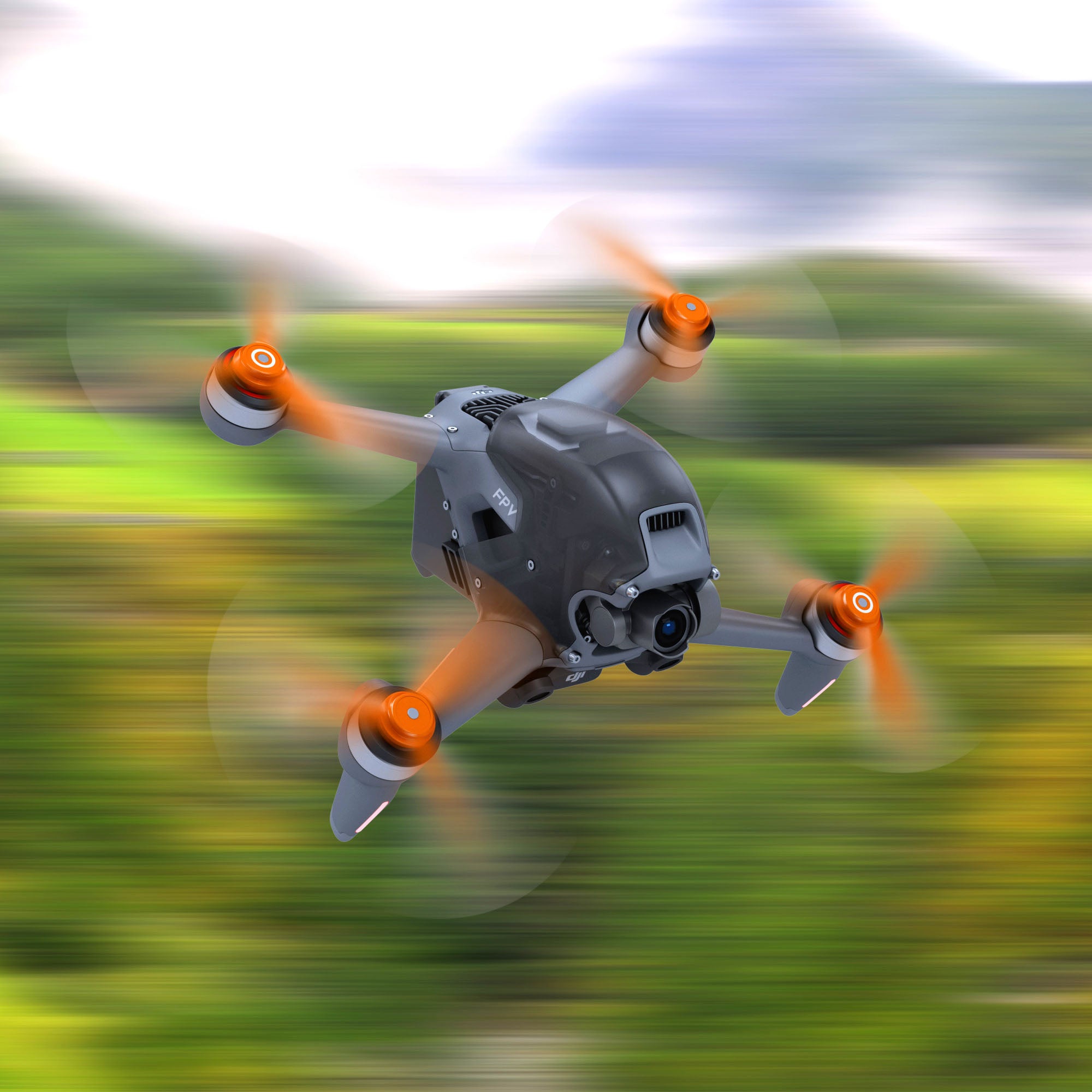
Mastering Flying Techniques
Basic Maneuvers and Controls
Now that you have the essential equipment, it’s time to dive into the heart of FPV racing: mastering your flying techniques. Whether you’re just starting or looking to refine your skills, understanding the foundational maneuvers is crucial for building confidence in the air. Start with these basic maneuvers:
- Takeoff and Landing:
- Begin with smooth throttle applications. Gradually increase throttle to lift off gently, avoiding abrupt movements that could lead to instability.
- Practice landing by gradually decreasing throttle and using your rudder for a smooth descent. Control is key—aim for a gentle touchdown!
- Yaw, Pitch, and Roll:
- Yaw: This is how you rotate your drone around its vertical axis. Use the left control stick (in most setups) to turn left or right; practice creating smooth turns to navigate corners.
- Pitch: Forward or backward movements happen here. Push the stick forward to dive and pull it back to ascend. Master this for maintaining altitude through challenging course setups.
- Roll: Utilize the right stick to tilt your drone left or right, essential for sharper turns and moves.
- Banked Turns:
- Instead of turning sharply, practice combining yaw and roll to create fluid, banked turns. This technique allows for higher speeds and better control, especially around tight corners.
When I was starting out, mastering these fundamental controls felt like a challenge at first, but soon, the drone became an extension of my own body. The more I practiced, the more intuitive everything became!
Advanced Racing Techniques
Once you’re comfortable with the basics, it’s time to elevate your game with advanced techniques that will set you apart on the racing circuit. These skills require practice and finesse. Here are some advanced racing techniques to consider:
- Chasing the Line:
- Focus on finding the ideal racing line through a course. This means identifying the fastest route while minimizing unnecessary maneuvers. Visualize the path your drone should take, especially during tight corners.
- Throttle Management:
- The ability to modulate your throttle during turns can drastically affect your speed and control. Practice pulling throttle back during tight corners to maintain stability and then ramping it back up during straightaways.
- Split-S:
- This maneuver, where you dive into a roll and then pull out, can be a game-changer for passing opponents or navigating through obstacles. Remember to practice it repeatedly to execute smoothly.
- Feathering:
- Feathering involves lightly adjusting your control inputs to achieve fine-tuned movements. This is especially useful for correcting small drift in a tightly packed environment.
- Simulated Practice:
- Incorporating simulation software that mimics real-world racing conditions can help you perfect your skills without the risk of crashing. It lets you practice advanced maneuvers over and over again.
As an experienced racer, I can attest that these advanced techniques can make a big difference during competitions. The thrill of applying these moves and watching other racers struggle to keep up is unbelievably satisfying. By investing time in mastering these flying techniques, you’ll not only improve your skills but also gain the confidence to take on more challenging races, ultimately making your FPV racing experience even more exhilarating! Keep practicing, and soon, you’ll be navigating courses like a pro!
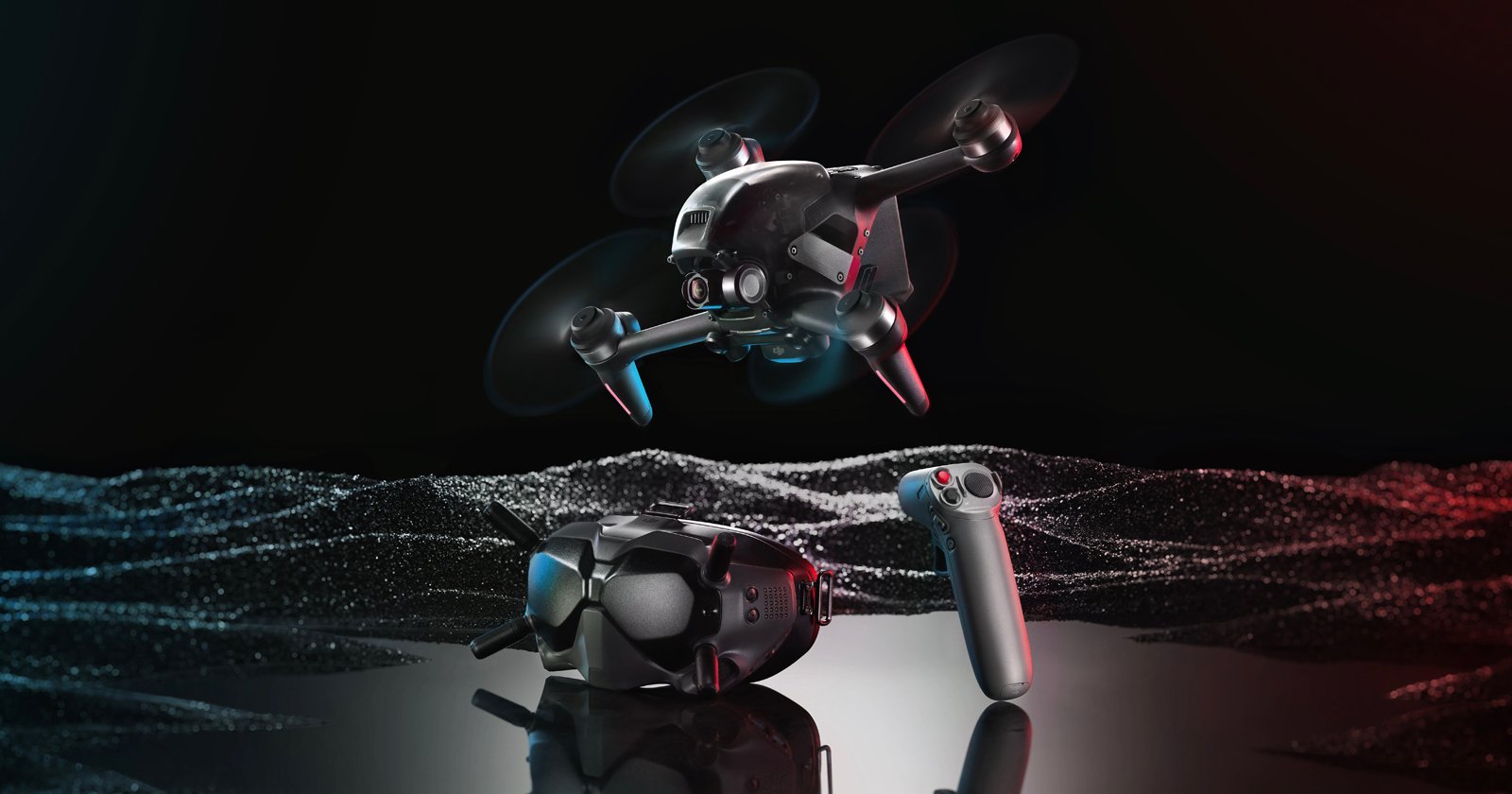
Maintenance and Care for DJI Racing Drones
Cleaning and Inspecting Your Drone
To ensure your DJI racing drone continues to perform at its best, regular maintenance is essential. This involves more than just checking battery levels before a race; cleaning and inspecting your drone can prolong its life and enhance its performance. Here’s a quick guide to cleaning and inspecting your drone effectively:
- Regular Cleaning:
- Remove Debris: After each racing session, inspect your drone for dirt and debris. Use a soft brush or compressed air to remove any dirt that has settled in hard-to-reach areas.
- Propellers: Clean your propellers and check them for any chips or damage, as they are vital for flight stability. Replace damaged propellers immediately to avoid potential crashes.
- Camera Lens: Ensure that your FPV camera lens is free of smudges or dirt. A clean lens is critical for clear visuals during races, and a microfiber cloth usually does the trick.
- Routine Inspections:
- Check Connections: Regularly inspect all connections, including motor wires and battery leads. Loose connections can cause significant issues in flight.
- Battery Health: Keep an eye on battery performance. Look for puffing or any signs of damage. Proper battery maintenance is crucial for safety and longevity.
- Firmware Updates: Ensure your drone’s software is up-to-date. Updating firmware can enhance performance and fix bugs that affect flight.
When I first started, I neglected these maintenance tips, and it cost me a few races! Once I adopted a regular cleaning schedule, I noticed a significant improvement in flight quality, and my drone maintained peak performance through various settings.
Troubleshooting Common Issues
Even with regular maintenance, issues can arise. Understanding common drone problems will prepare you to troubleshoot quickly, minimizing downtime. Here are some frequent problems and tips on how to handle them:
- Drone Won’t Power On:
- Check Battery Charge: Always verify that the battery is fully charged. If it is, inspect the battery connections for any signs of wear.
- Inspect the Power Button: Sometimes, a faulty power button can be the culprit. Ensure it is functioning properly.
- Limited Range:
- If you notice a reduction in control range, consider resetting your transmitter. Interference can be an issue as well, so try flying in an open area.
- Drifting During Flight:
- Calibration is key here. Regularly calibrate your flight controller and ensure the gyro sensor is aligned. Simple calibration procedures can usually solve this problem.
- Camera Feed Issues:
- If your FPV feed is lagging or glitchy, check the camera connections and ensure there are no obstructions. A change in your surroundings can sometimes affect signal quality.
By familiarizing yourself with these troubleshooting techniques, you can address problems quickly and keep the excitement of racing alive without long interruptions for repairs. Maintaining your DJI racing drone through regular cleaning, inspections, and being prepared for troubleshooting is essential for a smooth and enjoyable flying experience. By caring for your drone, you’ll ensure many thrilling races ahead!

Racing Strategies and Tips
Developing a Racing Mindset
Having the right mindset is just as crucial as the equipment you use in FPV racing. Your mental state can significantly affect your performance, especially in high-pressure situations. Developing a positive and focused racing mindset will set the stage for success on the track. Here’s how you can cultivate that winning mindset:
- Visualize Success: Before each race, take a moment to visualize your flight path. Picture yourself navigating through obstacles smoothly and making swift turns. This mental practice can enhance your focus and boost your confidence.
- Stay Calm Under Pressure: Racing can be intense, and it’s easy to feel overwhelmed. Practice deep breathing techniques to help calm your nerves. Remember, every great pilot has faced setbacks—it’s all part of the learning process!
- Learn from Mistakes: Each race presents an opportunity for growth. After every run, take time to reflect on what went well and what could be improved. Keeping a racing journal can help track your development and highlight areas needing focus.
- Focus on Consistency Over Speed: It’s tempting to try to go as fast as possible, but mastering consistency is crucial. Aim for smooth, controlled flying rather than reckless speed, especially in tighter courses.
Reflecting on my early days as a racer, I often rushed during competitions, leading to avoidable crashes. Once I shifted my mindset to prioritize control and strategy, the improvement in my performance was remarkable.
Preparing for FPV Racing Competitions
When it comes to racing competitions, preparation is vital for success. Ensuring you and your gear are ready can make all the difference on race day. Here’s a checklist to help you prepare effectively:
- Review the Course: If possible, practice on the actual course ahead of time. Familiarize yourself with tight turns and tricky obstacles. Getting a feel for the layout will give you an edge during the race.
- Check Your Drone Setup: Before any competition, conduct a thorough pre-race check. Ensure all components—from batteries to propellers—are in optimal condition. This will help alleviate any worries before you race.
- Understand the Rules: Every racing event has specific rules. Make sure you know the regulations, flight parameters, and any penalties for infractions. Being prepared can save you from unnecessary surprises on race day.
- Create a Race Day Routine: Developing a routine can help center you and reduce anxiety. Arrive at the venue early, perform a final check on your drone, and take a moment to mentally prepare.
- Stay Hydrated and Nourished: While it sounds simple, don’t underestimate the importance of staying hydrated and eating properly on race day. The better you feel physically, the more focused and energized you’ll be during the race.
I’ve learned that treating race preparation like a ritual can ease pre-race jitters. Establishing a routine ensures you’re physically and mentally ready to tackle the competition. Embracing a winning mindset coupled with thorough preparation creates a solid foundation for success in FPV racing. With practice and the right approach, you’ll not only improve as a pilot but also enjoy the exhilarating journey this sport offers! So gear up and get ready to take your skills to the next level!

Upgrading Your DJI Racing Drone
Upgrading Motors and Propellers
As you gain experience in FPV racing, you may find it beneficial to upgrade specific components of your DJI racing drone to enhance performance and tailor it more to your flying style. One of the most impactful upgrades is replacing your drone’s motors and propellers, which can significantly improve speed, maneuverability, and overall flight stability. When considering motor upgrades:
- Motor Size and KV Rating: Motors come in various sizes (usually indicated in millimeters) and KV ratings that define how many revolutions per minute (RPM) a motor can spin at 1V. A higher KV value typically translates to greater speed but may sacrifice torque. Choose motors suited to your racing style; for example, lower KV motors are great for heavier drones needing power for tight maneuvers.
- Weight and Balance: Upgrading to more powerful motors could necessitate a change in propellers to maintain balance. Striking the right balance is crucial to ensuring your drone remains agile and responsive while flying at high speeds.
When upgrading propellers:
- Material and Design: Choose carbon fiber propellers for their lightweight nature and strength. They may be pricier but outperform plastic alternatives, especially during intense racing. Additionally, consider the design: a larger blade diameter generally offers more lift, while a smaller design might be better for speed.
- Pitch: A propeller’s pitch affects how much air it pushes down, with higher pitches facilitating faster speeds. However, finding the right pitch for your drone and flying style involves some experimentation. Explore different combinations of pitch and prop diameter to find your perfect setup.
I vividly remember upgrading my propellers for a race last season. Switching to a higher pitch made my drone feel incredibly responsive, giving me the edge I needed to navigate through tight corners more efficiently.
Installing Aftermarket Components
After upgrading motors and propellers, consider adding aftermarket components to further enhance your drone’s performance. These modifications can be tailored to your specific needs and help you stand out during races. Some popular aftermarket components to consider include:
- Flight Controllers: Upgrading to an advanced flight controller can improve stabilization and add features like customizable flight modes. Look for controllers that offer better responsiveness and support for racing-specific settings.
- ESCs (Electronic Speed Controllers): High-quality ESCs can provide rapid throttle response and improved efficiency. Look for programmable models that allow you to adjust settings for different flight conditions and racing styles.
- Cameras and Transmitters: If you want clearer visuals while racing, investing in a high-quality FPV camera can greatly enhance your experience. Additionally, upgrading your video transmitter can provide better range and clearer video feeds, which is crucial for maintaining situational awareness during high-speed races.
- Batteries: Don’t overlook the importance of upgrading your batteries. High-discharge LiPo batteries can significantly provide more power, enabling you to maintain higher speeds for longer durations.
When I decided to install a new flight controller and ESCs, the difference was night and day. The drone’s handling improved immeasurably, giving me newfound confidence during races. In conclusion, upgrading your DJI racing drone helps enhance its performance and personalization. Experimenting with motors, propellers, and aftermarket components invites you to discover what works best for your racing style, ultimately leading to exhilarating experiences on the track! So don’t hesitate—dive in, make the upgrades, and enjoy the thrilling ride!
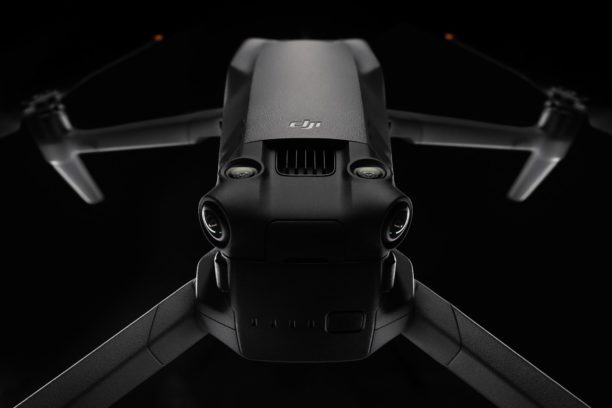
Safety Guidelines for FPV Racing
Understanding Drone Regulations
As an FPV racing enthusiast, understanding the regulations surrounding drone usage is essential for both your safety and the safety of others. Every country—or even region—can have its own set of rules, and being informed helps you fly legally and responsibly. Here’s how to navigate drone regulations effectively:
- Know the Local Laws:Start by researching the drone regulations in your area. In the U.S., for example, the Federal Aviation Administration (FAA) mandates that drone pilots adhere to specific guidelines, such as:
- Registering drones that weigh over 0.55 lbs.
- Keeping the drone within your line of sight during flight.
- Not flying above 400 feet.
- Avoiding restricted airspace, like near airports or military bases.
- Join Local FPV Clubs: Being part of a local FPV racing club can provide valuable insights into local regulations, as well as guidelines that club members follow. Clubs often organize official races, ensuring all participants are compliant with the rules.
- Certification and Training: Some regions may require or recommend that pilots complete courses or obtain certifications, particularly for commercial drone use. Familiarizing yourself with these rules can enhance your credibility and improve your flying skills.
When I began racing, I was unaware of certain local restrictions that prohibited flying in specific parks. After talking with fellow racers in my area, I learned the importance of following regulations, which allowed me to enjoy racing without worry.
Practicing Safe Flying Habits
Once you’re familiar with regulations, practicing safe flying habits becomes the next priority. Not only does this protect you and your drone, but it also ensures the safety of those around you. Here are some tips for maintaining safe flying habits:
- Conduct Pre-flight Checks: Always check your drone before flights. Inspect propellers for damage, ensure battery levels are adequate, and confirm that all connections are secure. A quick pre-flight check can help avert disasters.
- Fly in Designated Areas: Opt to fly in areas where drone usage is permitted, such as designated parks or racetracks. Avoid crowded public spaces where spectators may be unaware of your presence.
- Stay Aware of Surroundings: Always be cognizant of your environment—watch out for people, animals, and other aircraft. Maintaining situational awareness can help you react quickly to avoid potential accidents.
- Practice Controlled Flying: Start by flying in low-stress environments to build confidence. Control is crucial, especially in racing situations. As you become more skilled, gradually increase your speed and complexity of maneuvers.
- Wear Safety Gear: Although it may seem trivial, wearing safety gear such as goggles and gloves can protect you from accidents. Underestimating the potential risks during a crash can have serious repercussions.
From my experience, practicing safe flying habits not only enhances my confidence but also elevates the overall experience for everyone involved. This way, racing becomes enjoyable without worrying about unnecessary risks. In conclusion, understanding drone regulations and adopting safe flying habits are essential for ensuring a responsible and enjoyable FPV racing experience. As you continue to explore this exhilarating hobby, remember that safety should always come first. With proper planning and awareness, you’ll make memories you can cherish while keeping your flying experience safe and enjoyable!
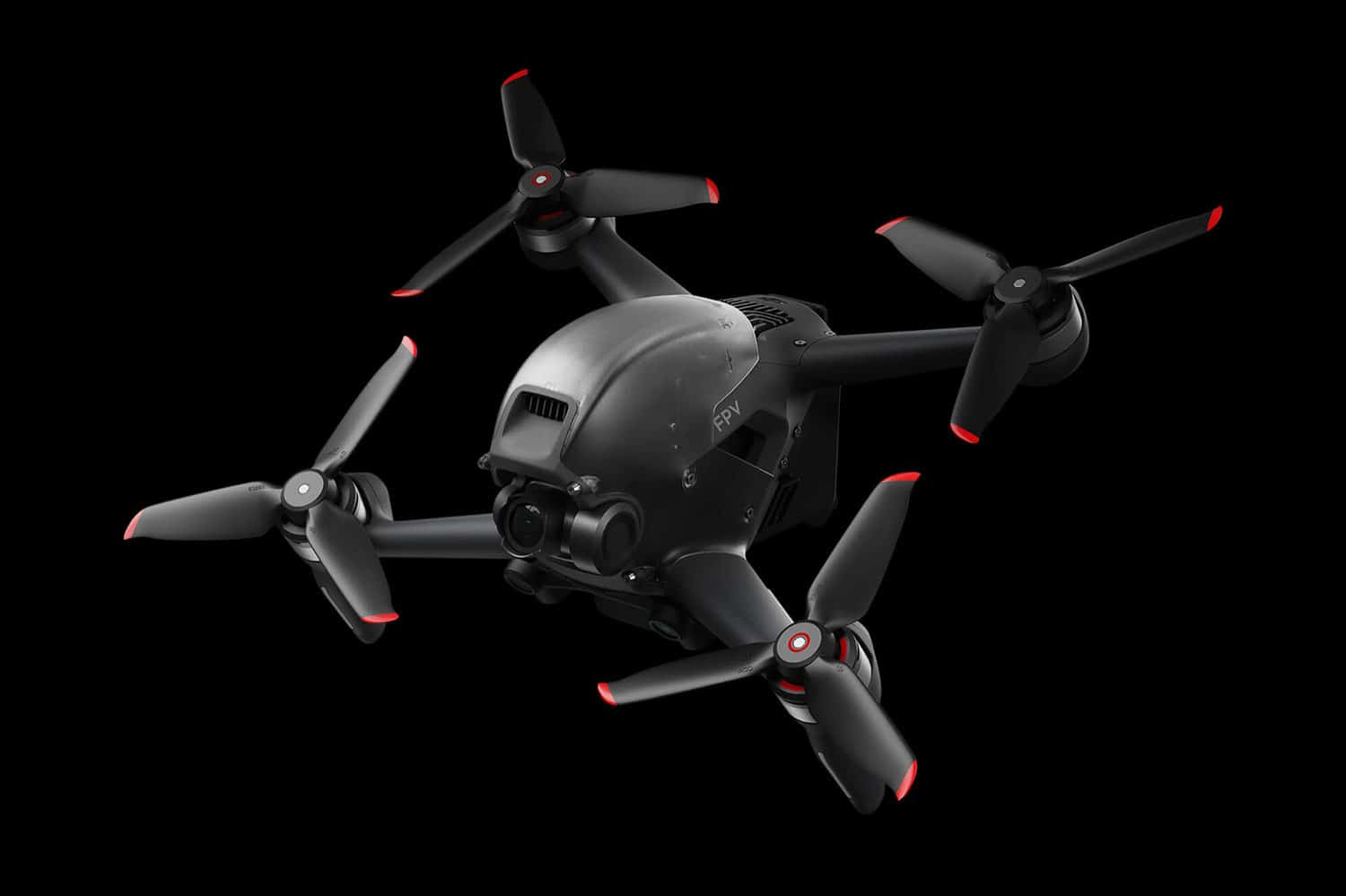
Joining the FPV Racing Community
Connecting with Local Racing Clubs
One of the most rewarding aspects of FPV racing is the vibrant community that surrounds it. Joining a local racing club can be a fantastic way to connect with fellow enthusiasts who share your passion for flying drones. The benefits of being part of a community go beyond just camaraderie; they can significantly enhance your skills and overall racing experience. Here’s how to connect with local racing clubs:
- Research and Reach Out: Start by searching online for FPV racing clubs in your area. Websites like the Academy of Model Aeronautics (AMA) or Facebook groups dedicated to drone racing can be excellent resources for finding clubs nearby.
- Attend Meetups: Many clubs host informal meetups where you can meet other pilots, see their setups, and even get some hands-on tips. Attending these gatherings can also help you understand the racing scene in your locality.
- Participate in Workshops: Clubs often organize workshops where experienced pilots share their insights on racing techniques, drone maintenance, and upgrades. Participating in these can give you a wealth of knowledge and help you improve rapidly.
- Follow Club Rules and Etiquette: Each club may have specific rules regarding flying areas, equipment, and conduct. Adhering to these guidelines fosters a positive environment for all members.
From my experience, joining a local club was a game changer. I met skilled pilots who generously shared their tips and tricks, something I hadn’t been able to learn from online forums alone. The community’s support was invaluable, especially as I navigated through my early races.
Participating in Racing Events
Once you’ve connected with local racing clubs, participating in racing events can elevate your experience even further. These events provide the perfect opportunity to test your skills, learn from others, and engage in friendly competition. Here’s how to make the most of racing events:
- Start Small: If you’re a beginner, consider entering smaller local events or practice races to build confidence. These settings are usually less competitive and more welcoming for newcomers.
- Register Early: Make sure to register for events ahead of time to secure your spot. Many competitions have limited slots, and registering early allows you to plan your preparation accordingly.
- Network with Other Pilots: Use racing events as an opportunity to network. Chat with experienced racers and ask questions about techniques and gear. Building relationships within the community can lead to future collaborations or even friendships.
- Learn and Adapt: Regardless of your race outcome, treat every event as a learning opportunity. Take note of what worked well during your flight, and analyze areas where you can improve.
- Embrace the Experience: Remember to soak in the atmosphere—there’s nothing quite like the thrill of competition, the roar of drones in the air, and the camaraderie among pilots all gathered for the same reason.
I vividly recall my first racing event. As nervous as I was at the start, the excitement of racing alongside experienced veterans pushed me beyond my limits. I learned so much from both my performance and the encouraging feedback from fellow racers. In conclusion, immersing yourself in the FPV racing community by connecting with local clubs and participating in racing events can vastly enrich your experience. Not only do you improve your skills, but you also create lasting friendships and memorable experiences. So don’t hesitate—dive into the community, embrace the challenge, and soar high alongside fellow enthusiasts! 🚀

Conclusion
As we wrap up this exploration of the exhilarating world of FPV racing and DJI drones, it’s clear that this hobby offers an incredible blend of technology, skill, and community. Whether you’re just starting or you’re striving to elevate your racing game, each step in this journey brings thrilling experiences and opportunities for growth.
Reflecting on the Journey
Reflecting on my own journey in FPV racing, I remember the nervous excitement of my first flight. From learning the basic maneuvers to mastering complex racing techniques, every moment contributed to an invaluable learning experience. Along the way, I encountered challenges that tested my skills and decision-making, but each setback turned into a stepping stone toward improvement. If you’ve followed our journey through the essentials—from understanding drone components and upgrading motors to the importance of safety guidelines and engaging with the community—you’re well-equipped for your own adventure in FPV racing. Remember that each element we discussed is interconnected:
- Equipment Matters: The right tools, from high-quality goggles to dependable batteries, enhance your flying experience and performance.
- Knowledge is Power: Familiarizing yourself with regulations ensures responsible flying, protecting you and the community.
- Mindset is Key: Cultivating a racing mindset helps you stay calm and focused on the track, turning challenges into achievements.
The Thrill of Continuous Learning
The beauty of FPV racing lies in its ever-evolving nature. Technologies are continuously advancing, with new models and upgrades emerging regularly. Just when you think you’ve mastered something, a fresh challenge or a new technique beckons. The thrill of constant learning keeps the hobby exciting and engaging. As you venture further into this exciting realm, don’t forget to document your experiences. Keeping a journal can help track your progress, reflect on your journey, and celebrate your achievements. Sharing these insights with others, whether through local clubs or online communities, not only enriches your understanding but also contributes to the growth of the entire FPV racing landscape.
Embracing the Community
Finally, embracing the FPV racing community can transform your experience. The friendships formed, the knowledge shared, and the thrill of competition create a supportive and motivating environment. Whether you’re at the starting line or casually flying with friends, the sense of belonging is irreplaceable. Remember, every race is an opportunity—an opportunity to learn, connect, and enjoy the sheer joy of flying. So gear up, stay focused, and take to the skies with confidence! As you turn the page to your racing journey, may each flight bring you closer to your goals and ignite a passion that drives you to new heights. Happy flying! 🏁✈️
